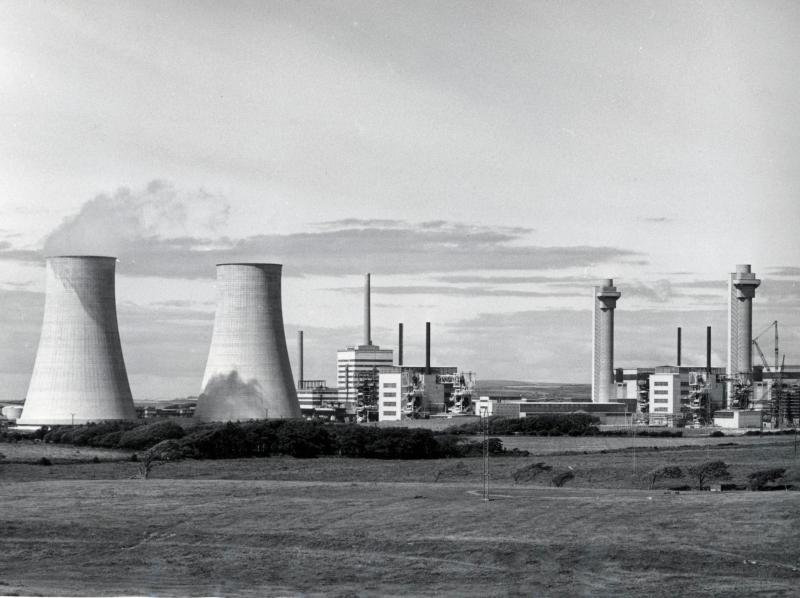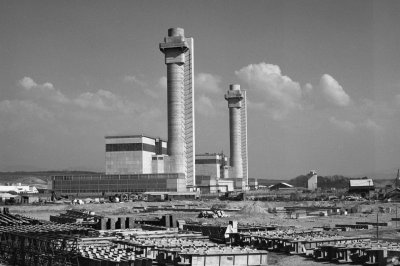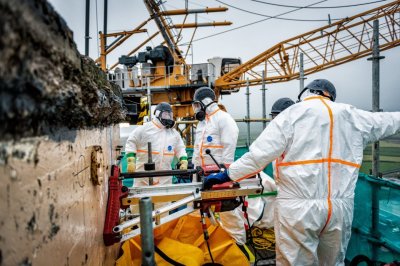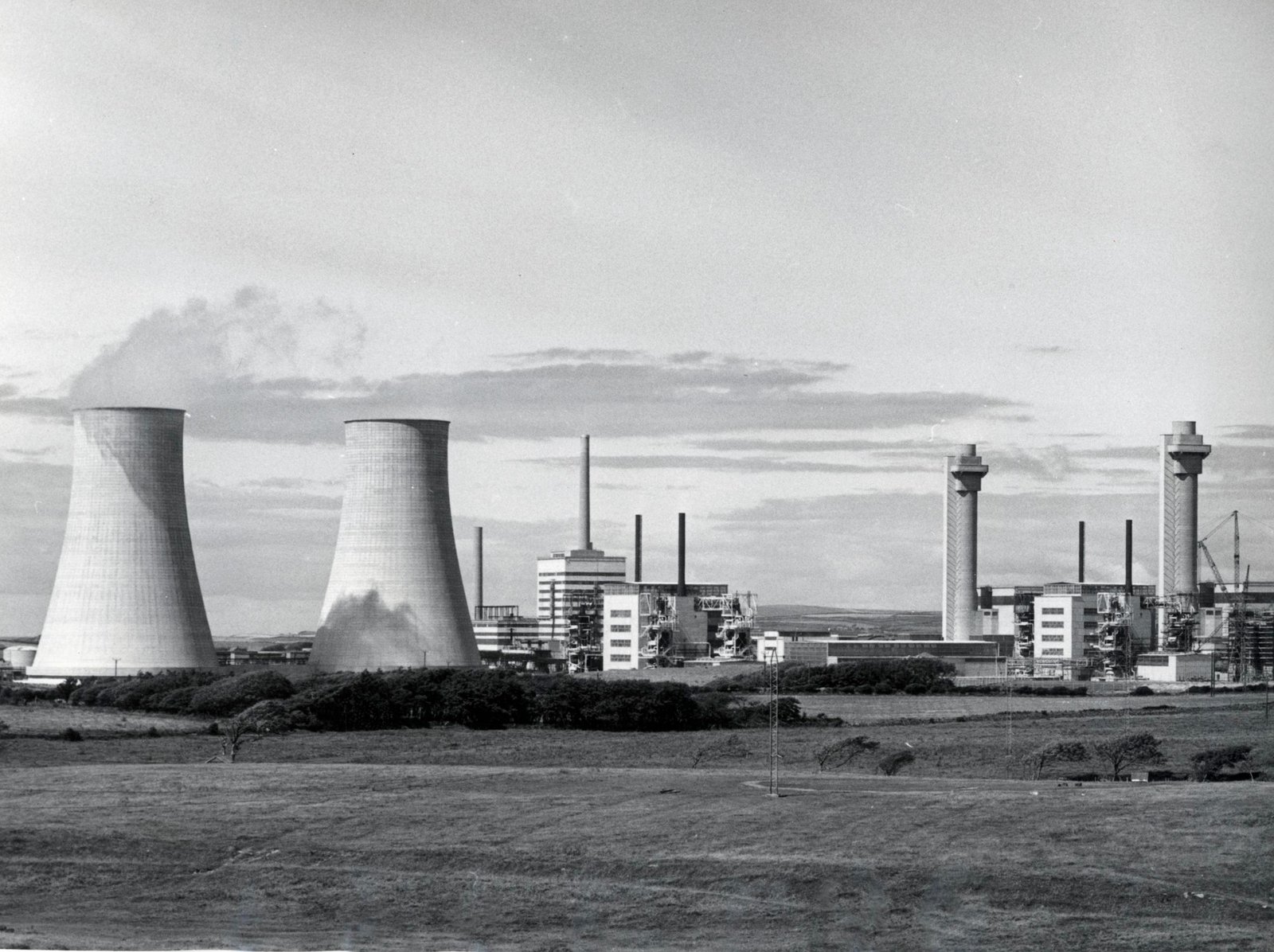
If I mention nuclear reactor accidents, you’d probably think of Three Mile Island, Fukushima, or maybe Chernobyl (or, now, Chornobyl). But there have been others that, for whatever reason, aren’t as well publicized. Did you know there is an International Nuclear Event Scale? Like the Richter scale, but for nuclear events. A zero on the scale is a little oopsie. A seven is like Chernobyl or Fukushima, the only two such events at that scale so far. Three Mile Island and the event you’ll read about in this post were both level five events. That other level five event? The Windscale fire incident in October of 1957.
If you imagine this might have something to do with the Cold War, you are correct. It all started back in the 1940s. The British decided they needed a nuclear bomb project and started their version of the Manhattan Project called “Tube Alloys.” But in 1943, they decided to merge the project with the American program.
The British, rightfully so, saw themselves as co-creators of the first two atomic bombs. However, in post-World War paranoia, the United States shut down all cooperation on atomic secrets with the 1946 McMahon Act.
We Are Not Amused
The British were not amused and knew that to secure a future seat at the world table, it would need to develop its own nuclear capability, so it resurrected Tube Alloys. If you want a detour about the history of Britan’s bomb program, the BBC has a video for you that you can see below.
Of course, post-war Britain wasn’t exactly flush with cash, so they had to limit their scope a bit. While the Americans had built bombs with both uranium and plutonium, the UK decided to focus on plutonium, which could create a stronger bomb with less material.
Of course, that also means you have to create plutonium, so they built two reactors — or piles, as they were known then. They were both in the same location near Seascale, Cumberland.
Inside a Pile

The reactors were pretty simple. There was a big block of graphite with channels drilled through it horizontally. You inserted uranium fuel cartridges in one end, pushing the previous cartridge through the block until they fell out the other side into a pool of water.
The cartridges were encased in aluminum and had cooling fins. These things got hot! Immediately, though, practical concerns — that is, budgets — got in the way. Water cooling was a good idea, but there were problems. First, you needed ultra-pure water. Next, you needed to be close to the sea to dump radioactive cooling water, but not too close to any people. Finally, you had to be willing to lose a circle around the site about 60 miles in diameter if the worst happened.
The US facility at Hanford, indeed, had a 30-mile escape road for use if they had to abandon the site. They dumped water into the Columbia River, which, of course, turned out to be a bad idea. The US didn’t mind spending on pure water.
Since the British didn’t like any of those constraints, they decided to go with air cooling using fans and 400-foot-tall chimneys.
Our Heros
Most of us can relate to being on a project where the rush to save money causes problems. A physicist, Terence Price, wondered what would happen if a fuel cartridge split open. For example, one might miss the water pool on the other side of the reactor. There would be a fire and uranium oxide dust blowing out the chimney.
The idea of filters in each chimney was quickly shut down. Since the stacks were almost complete, they’d have to go up top, costing money and causing delays. However, Sir John Cockcroft, in charge of the construction, decided he’d install the filters anyway. The filters became known as Cockcroft’s Follies because they were deemed unnecessary.
So why are these guys the heroes of this story? It isn’t hard to guess.
A Rush to Disaster
The government wanted to quickly produce a bomb before treaties would prohibit them from doing so. That put them on a rush to get H-bombs built by 1958. There was no time to build more reactors, so they decided to add material to the fuel cartridges to produce tritium, including magnesium. The engineers were concerned about flammability, but no one wanted to hear it.
They also decided to make the fins of the cartridges smaller to raise the temperature, which was good for production. This also allowed them to stuff more fuel inside. Engineers again complained. Hotter, more flammable fuel. What could go wrong? When no one would listen, the director, Christopher Hinton, resigned.
The Inevitable
The change in how heat spread through the core was dangerous. But the sensors in place were set for the original patterns, so the increased heat went undetected. Everything seemed fine.
It was known that graphite tends to store some energy from neutron bombardment for later release, which could be catastrophic. The solution was to heat the core to a point where the graphite started to get soft, which would gradually release the potential energy. This was a regular part of operating the reactors. The temperature would spike and then subside. Operations would then proceed as usual.
By 1957, they’d done eight of these release cycles and prepared for a ninth. However, this one didn’t go as planned. Usually, the core would heat evenly. This time, one channel got hot and the rest didn’t. They decided to try the release again. This time it seemed to work.
As the core started to cool as expected, there was an anomaly. One part of the core was rising instead, reaching up to 400C. They sped up the fans and the radiation monitors determined that they had a leak up the chimney.
Memories
Remember the filters? Cockcroft”s Follies? Well, radioactive dust had gone up the chimney before. In fact, it had happened pretty often. As predicted, the fuel would miss the pool and burst.
 With the one spot getting hotter, operators assumed a cartridge had split open in the core. They were wrong. The cartridge was on fire. The Windscale reactor was on fire.
With the one spot getting hotter, operators assumed a cartridge had split open in the core. They were wrong. The cartridge was on fire. The Windscale reactor was on fire.
Of course, speeding up the fans just made the fire worse. Two men donned protective gear and went to peek at an inspection port near the hot spot. They saw four channels of fuel glowing “bright cherry red”. At that point, the reactor had been on fire for two days. The Reactor Manager suited up and climbed the 80 feet to the top of the reactor building so he could assess the backside of the unit. It was glowing red also.
Fight Fire with ???
The fans only made the fire worse. They tried to push the burning cartridges out with metal poles. They came back melted and radioactive. The reactor was now white hot. They then tried about 25 tonnes of carbon dioxide, but getting it to where it was needed proved to be too difficult, so that effort was ineffective.
By the 11th of October, an estimated 11 tonnes of uranium were burning, along with magnesium in the fuel for tritium production. One thermocouple was reading 3,100C, although that almost had to be a malfunction. Still, it was plenty hot. There was fear that the concrete containment building would collapse from the heat.
You might think water was the answer, and it could have been. But when water hits molten metal, hydrogen gas results, which, of course, is going to explode under those conditions. They decided, though, that they had to try. The manager once again took to the roof and tried to listen for any indication that hydrogen was building up. A dozen firehoses pushed into the core didn’t make any difference.
Sci Fi
If you read science fiction, you probably can guess what did work. Starve the fire for air. The manager, a man named Tuohy, and the fire chief remained and sent everyone else out. If this didn’t work, they were going to have to evacuate the nearby town anyway.
They shut off all cooling and ventilation to the reactor. It worked. The temperature finally started going down, and the firehoses were now having an effect. It took 24 hours of water flow to get things completely cool, and the water discharge was, of course, radioactive.
If you want a historical documentary on the even, here’s one from Spark:
Aftermath
The government kept a tight lid on the incident and underreported what had been released. But there was much less radioactive iodine, cesium, plutonium, and polonium release because of the chimney filters. Cockcroft’s Folly had paid off.
While it wasn’t ideal, official estimates are that 240 extra cancer cases were due to the accident. Unofficial estimates are higher, but still comparatively modest. Also, there had been hushed-up releases earlier, so it is probably that the true number due to this one accident is even lower, although if it is your cancer, you probably don’t care much which accident caused it.
Milk from the area was dumped into the sea for a while. Today, the reactor is sealed up, and the site is called Sellafield. It still contains thousands of damaged fuel elements within. The site is largely stable, although the costs of remediating the area have been, and will continue to be staggering.
This isn’t the first nuclear slip-up that could have been avoided by listening to smart people earlier. We’ve talked before about how people tend to overestimate or sensationalize these kinds of disasters. But it still is, of course, something you want to avoid.
Featured image: “HD.15.003” by United States Department of Energy
This articles is written by : Nermeen Nabil Khear Abdelmalak
All rights reserved to : USAGOLDMIES . www.usagoldmines.com
You can Enjoy surfing our website categories and read more content in many fields you may like .
Why USAGoldMines ?
USAGoldMines is a comprehensive website offering the latest in financial, crypto, and technical news. With specialized sections for each category, it provides readers with up-to-date market insights, investment trends, and technological advancements, making it a valuable resource for investors and enthusiasts in the fast-paced financial world.
